Using Fronts from PBtA to Create Evil Organizations in D&D 5e
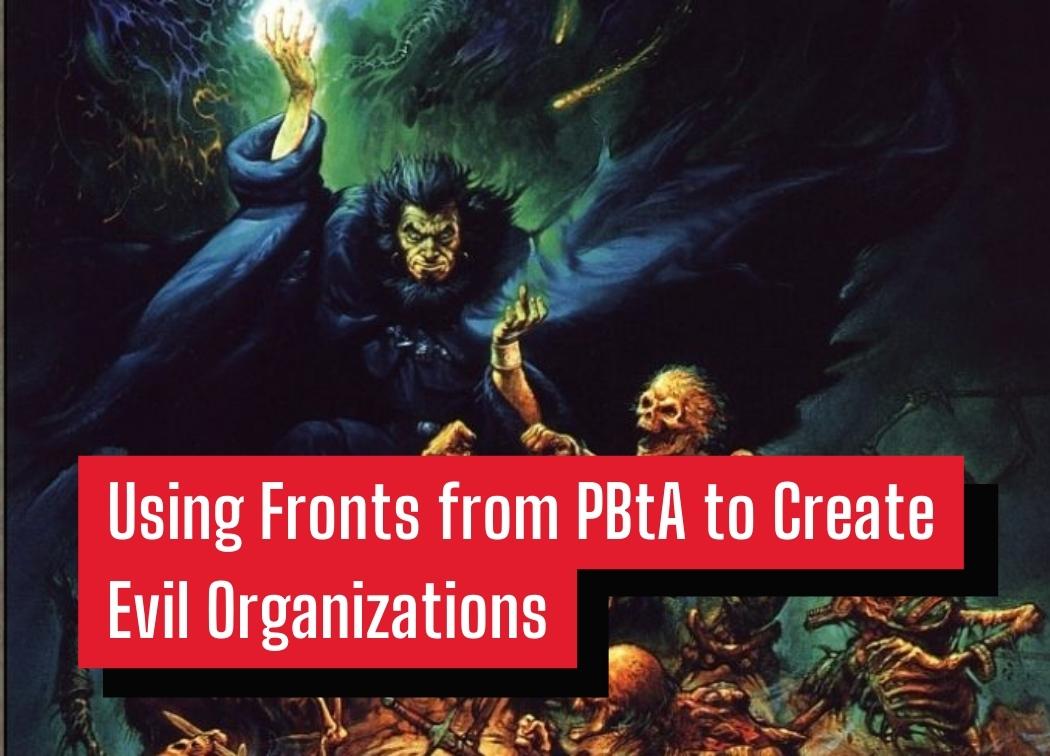
I’ve made it no secret that I love Apocalypse World and Powered by the Apocalypse (PBtA) games as a whole. They’re excellent rules-lite systems that require very little prep time and rules memorization compared to games like Dungeons and Dragons 5th Edition. Fronts are one of a few elements from the PBtA systems that I’ve carried over into my D&D 5e games.
There are many benefits to playing, reading, or just trying-out multiple game systems. One such benefit is to find elements of different games and use them as ways to improve upon your group’s favorite or preferred system. For example, I love D&D 5e, it’s my favorite system, but it’s got plenty of flaws that are handled better in other systems.
There are also other systems that handle different parts of RPGs way better in my opinion. Case in point, I wouldn’t play D&D 5e if I wanted a game that focuses entirely on role-playing. Honestly, I’d probably play a PBtA game!
We’ve talked about creating great D&D villains before, so today let’s talk about how to create evil organizations as a whole in an easy and dynamic way using the front rules from PBtA.
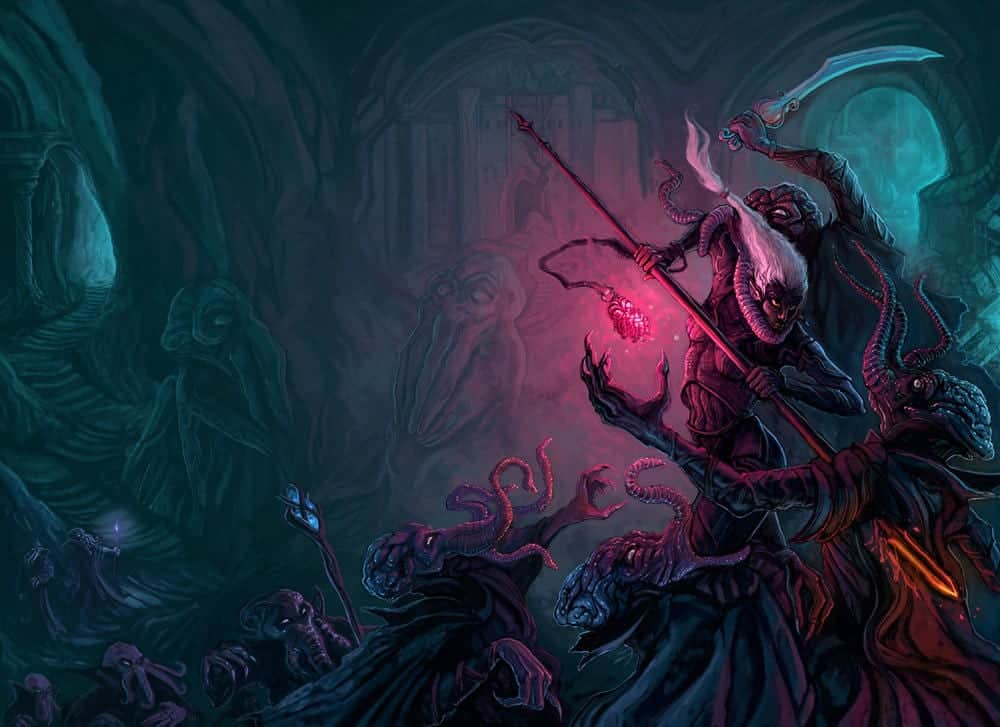
What is a Front?
A front is a massive, inter-connected danger. These dangers, threats, and villains all operate under a single umbrella, their organization. For the record, a front doesn’t have to be an evil organization, but that’s what we’re going to be focusing on today.
An evil organization is essentially a conglomerate of evil NPCs and/or creatures whose goals align. Individuals within the organization may have different motivations, philosophical differences, or additional goals, but they’re all aligned in their more important aspirations and ideals.
Think of it like an adventuring party. Each member has their own dreams and aspirations, but they work together because they agree on enough things and can accomplish more together than they would able to by themselves. It’s a symbiotic relationship.
An evil organization needs some sort of endgame. This could be a major event or a series of events that will allow them to accomplish their goal(s). These are events that the party can halt and plans that they can thwart. A front is made with this being a focal point of the evil organization’s creation in your game.
The Dungeon World fronts are probably one of the closest conversions for D&D as they’re both fantasy themed games. In the case of an evil organization, you’re most likely going to create a campaign front instead of an adventure front unless this a small organization that will only appear for a few sessions.
Elements of a Front
Name
First thing’s first. You need to come up with a name for your group of villains. This could be a proper name, a name of a business, or a mysterious codename. It doesn’t have to have significance to their goals to be a solid name.
You may also want to make some sort of symbol or logo for your villainous group, again depending on the group. Some groups may want to leave calling-cards or symbols at spots they’ve committed some sort of evil act as a way to instill fear or other emotions in the common people nearby.
There are no wrong answers in any of these sections, but the name and logo/symbol of your organization has no mechanical bearing on the game. Make something that sounds cool that your players (hopefully) won’t make fun of!
Agenda
Your evil organization’s agenda is important for the story of your entire campaign. This is what your group of villains intends to do as well as their overarching goals. Basically, it’s the reason why this group of people or creatures have gotten together, their shared vision.
This is generally a broad, philosophical ideal that the group shares. A way that the organization intends to change the world for their benefit. This could be a major threat or a more localized event depending on the scale of the organization.
In my opinion, this needs to be something clearly stated. There’s no reason a group of powerful people would work together if there wasn’t a clear way that each member of the group could benefit from.
Basically, your agenda isn’t going to be, “obtain the orb of power”, that’s a danger that will be used to complete your evil organization’s agenda of “amass power and rule the world”.
Cast
This is, though a simple section, an extremely important section to fill out when creating a front. The cast is every named NPC that is involved with the evil organization that you’re creating. Anyone that has some form of importance in the goings-on of the front.
However, this doesn’t mean that the cast list is reserved only for the big bosses of your evil league of evil. Any NPC that the party could potentially have an interesting interaction with, big or small, should get a name and be assigned a job within the organization.
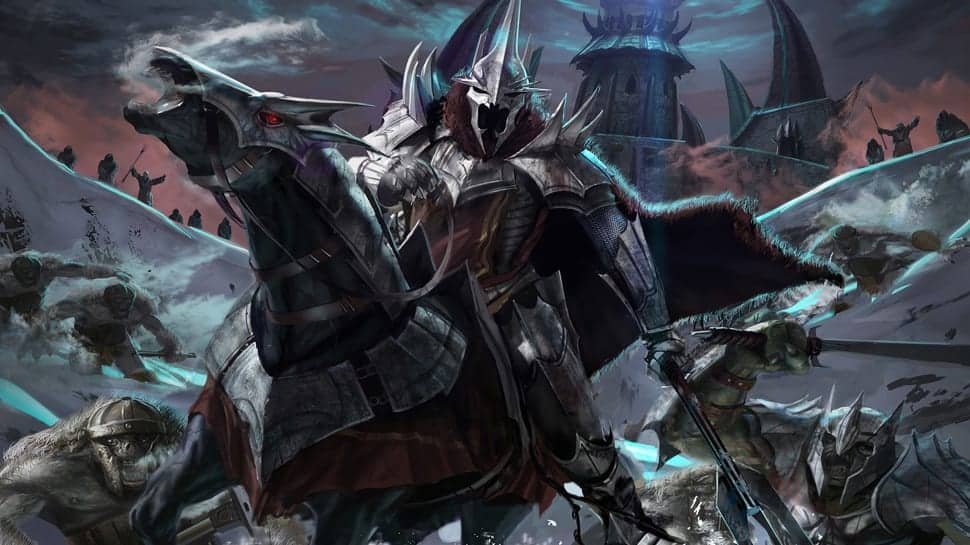
This isn’t a small undertaking by any means, but it’s not as difficult as it may seem. A major part of PBtA games is that the players can interact with anything or anyone so it’s a good idea to have a lot of extra names and characters written down on scrap paper should you need to make a NPC on the fly.
I feel like this is a valuable thing to have in a D&D game too! What happens if the party tries talking to the henchmen guards instead of just trying to dispatch them? Well, you can now look at your list of names and you have a couple of potential stand-in characters for these previously unnamed guards.
If you’re feeling extra creative you could always list the character’s motivations or other important information, but don’t go into a lot of detail. Leave stuff up in the air so you can be flexible during the game!
Stakes
Stakes are one of my favorite parts of PBtA fronts. These are concrete questions that are relevant to the campaign that you want to be resolved through the game. You as the DM do not have the answer to these questions, but they’re impactful and extremely important.
Your players will help you answer your stakes questions. Their actions and decisions will impact the game as a whole to the point of you being able to answer the question, or they will directly answer a stakes question due to their actions.
PBtA has a big focus on collaborative storytelling, but I think every game would be more fun if we tried to put more of the storytelling agency in the players’ hands. This is one great way to accomplish that. It’s something you want to know, but you can’t or won’t answer yourself. Your players tell this story.
One example of a stakes question I used in one of my games was, “who will secure the red book of knowledge”. I was actually surprised when my players weren’t the ones to get it first. The bad guys won that one and changed the campaign significantly. It was awesome.
Dangers
Dungeon World and Apocalypse World both recommend that you create 2-3 of their respective Dangers and Threats for a front. This could be enough for a shorter D&D 5e campaign, but I tend to find that most of my D&D campaigns last much longer than my PBtA campaigns.
It won’t hurt you to add a few extra dangers if you’re planning a long-term campaign. Alternatively, you could have multiple campaign fronts.
Who or What is the Danger?
A danger is a specific event, dungeon, or adventure that the front will take part in. Dangers will significantly impact the party as well as the campaign as a whole.
For example, a danger could be to “obtain the orb of power from the dungeon hidden beneath the river of blood”. This is an event that has consequences for the party if the evil organization obtains the orb of power. If the organization obtains this orb of power, they can then use it to fulfill their agenda of ruling the world. That’s why this is a danger instead of a standard dungeon or adventure. The stakes are higher so the party needs to come out on top!
A danger could also be a singular person. Hell, it could be anything. It could even be a series of dungeons in which the party has to stop the villains from obtaining a bunch of different artifacts.
Each dungeon or adventure that your evil group is involved in doesn’t have to be a danger. Dangers should have major consequences for the party failing to respond to them or fail to complete whatever challenge the front throws their way in this danger.
Dangers are reserved solely for major events. There should be a very limited number of these for each of your campaign fronts. If you find your front with a disproportionate amount of dangers you may have underestimated what a danger truly entails.
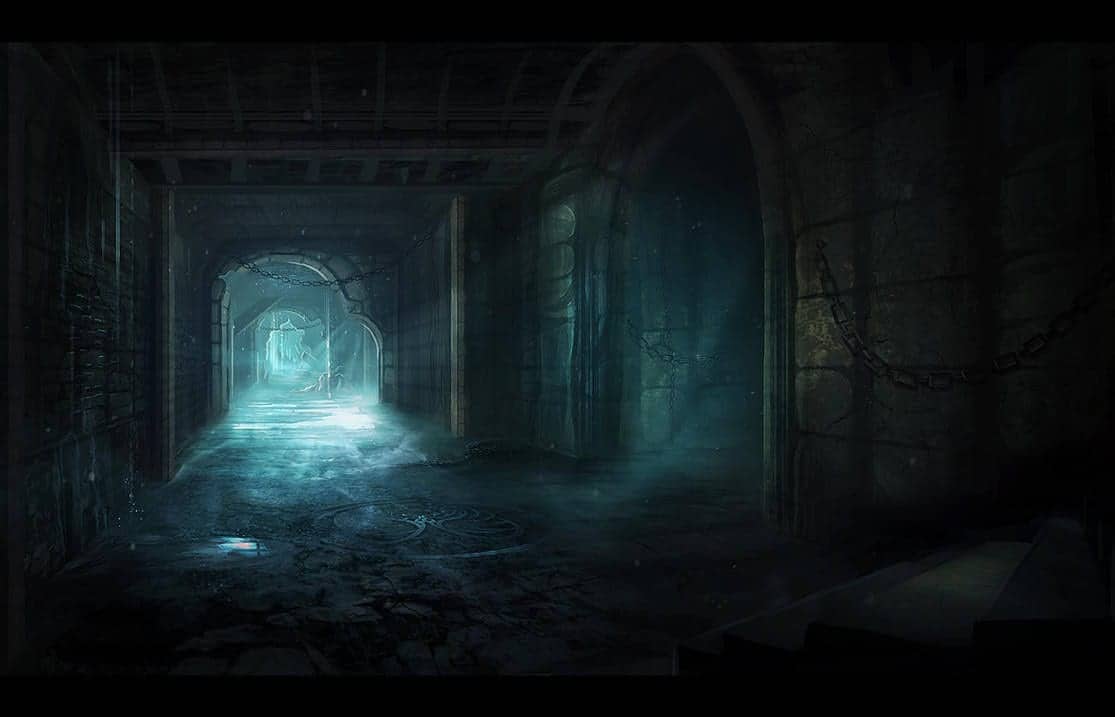
What’s the Impulse?
A good way to determine if your event is a danger is to make sure that there’s an impulse for the danger. In a way, an impulse is like a danger’s version of an agenda. It’s a motivation or reason that drives the danger.
Depending on the danger that you’ve chosen you may have to think a bit more abstractly. A dungeon, for example, wouldn’t typically have an impulse. It’s simply a building that exists. Instead, it’s the creatures inside of it that have an impulse. This could be to guard whatever it is the party is seeking.
Your impulse could also be written from the perspective of the members of your evil organization that the party will have to interact with during the danger. An impulse is different from an agenda in this scenario in that it’s more of a reason for what these antagonists are doing right now.
This is an impulse. It’s concise and it pertains to what’s currently happening, not what will happen in the future.
Grim Portents: What Happens if the Party Fails to Vanquish the Danger?
This is one of my favorite parts of PBtA systems like Dungeon World. As the GM or DM you’re not only considering what happens if the party wins but instead, you’re focusing on what will happen if the party fails.
I found this to be a great exercise in creating better villains, evil organizations, and stories in general. DMs and GMs are often focused on what the players get, what their characters will do, and what obstacles they will face. We typically don’t think of the other side of the coin when we’re creating all of this.
Grim portents are what happens if the danger you’ve created is not resolved by the party. These are steps towards an impending doom which is for all intents and purposes what happens when the evil organization gets their wish. Your impending doom is typically similar to your front’s agenda.
Of course, it could be something truly evil that your group of big bads couldn’t have imagined. Maybe it’s something so evil and destructive that they can’t contain the impending doom!
Both grim portents and your impending doom can change as the players interact with the world. What may have made sense when you were originally planning your evil organization and the campaign may no longer work after certain events and outcomes have happened through actual play. Always be thinking about how each session affects your fronts and their dangers!
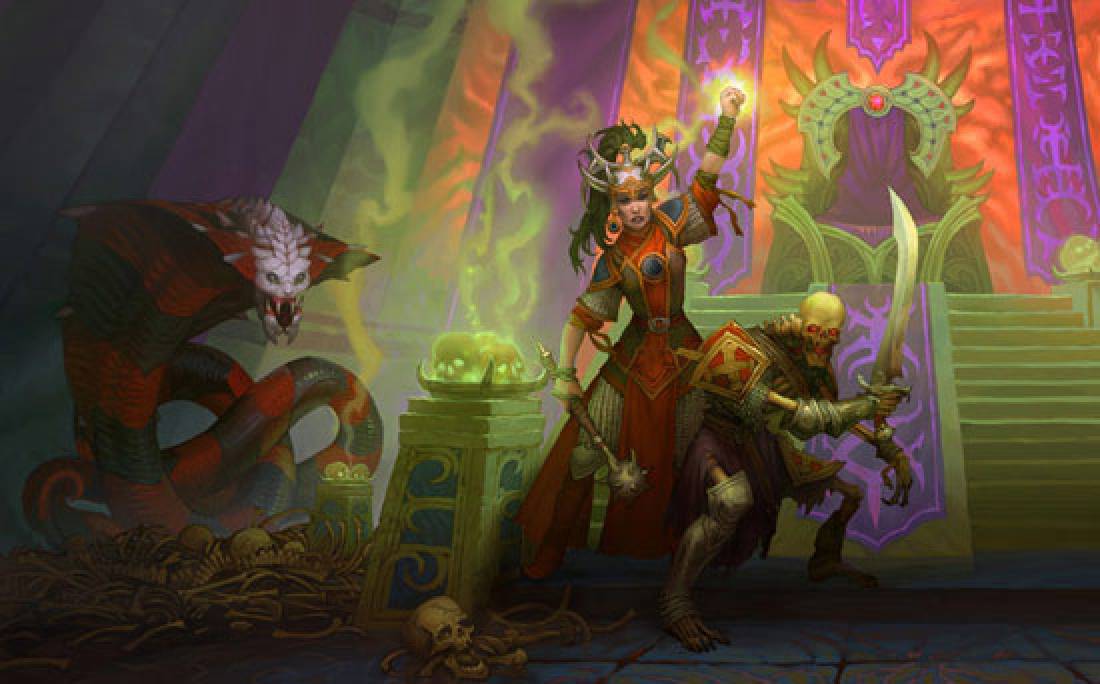
Dynamic Storytelling
Let’s back-track to the example of my stakes question. Early on in my campaign, I introduced a MacGuffin that would serve to introduce the party to the campaign’s evil organization. I made it a “race to the MacGuffin” style adventure to see what happens and left it at that.
The party was able to reach the place the MacGuffin was being held but surprisingly ended up taking a long rest before entering the dungeon. So, what do the villains do? Surely they wouldn’t just stop and wait for the party to wake up, right?
This is a central part of a front in PBtA. Your front doesn’t just stop what they’re doing just because the players aren’t interacting with them. The bad guys will continue to carry out their plans in the background. You should always be thinking of what your villains or antagonists are doing while the party isn’t currently interacting with them.
Now, this doesn’t mean that every time the party takes a side-quest that your front will be able to complete a goal or acquire power and resources unhindered. The domino effect is a real thing.
For example, your players saving a group of guards earlier in the campaign in a town affects your villain’s chance of success of obtaining a rare artifact inside of that town. Maybe they lose a key member during their heist, or the guard is able to stop them. The party may hear about this event after. Their actions mattered, but they didn’t have to directly stop the villains in order to interact with them.
The story goes on, even when the party isn’t directly involved. That’s what dynamic storytelling should be and what you should aspire to use for this type of DM prep.
Conclusions
I’ve found the front mechanics from PBtA to be super useful for creating and keeping track of evil organizations and key plot points in D&D 5e campaigns. They’re straightforward and give the DM just enough information to work with that they’ll be able to play and prep anything involving the front.
Perhaps my favorite part about fronts is that they’re not just beneficial to the DM and their prep time. They intentionally leave enough open-ended questions for the players to deal with that the game becomes more dynamic because of this.
After you’ve created the front, you’ll have to keep track of it. What happens each time the party interacts with the evil organization? What does the front do in response to the party killing or capturing one of their leaders?
Fronts change the playstyle of the party’s antagonists from a static group of characters to a more life-like group. In a way, the DM is now playing a character rather than writing a plotline for the party to interact with. In my opinion, it’s drastically easier to prep, and way more fun to play!
